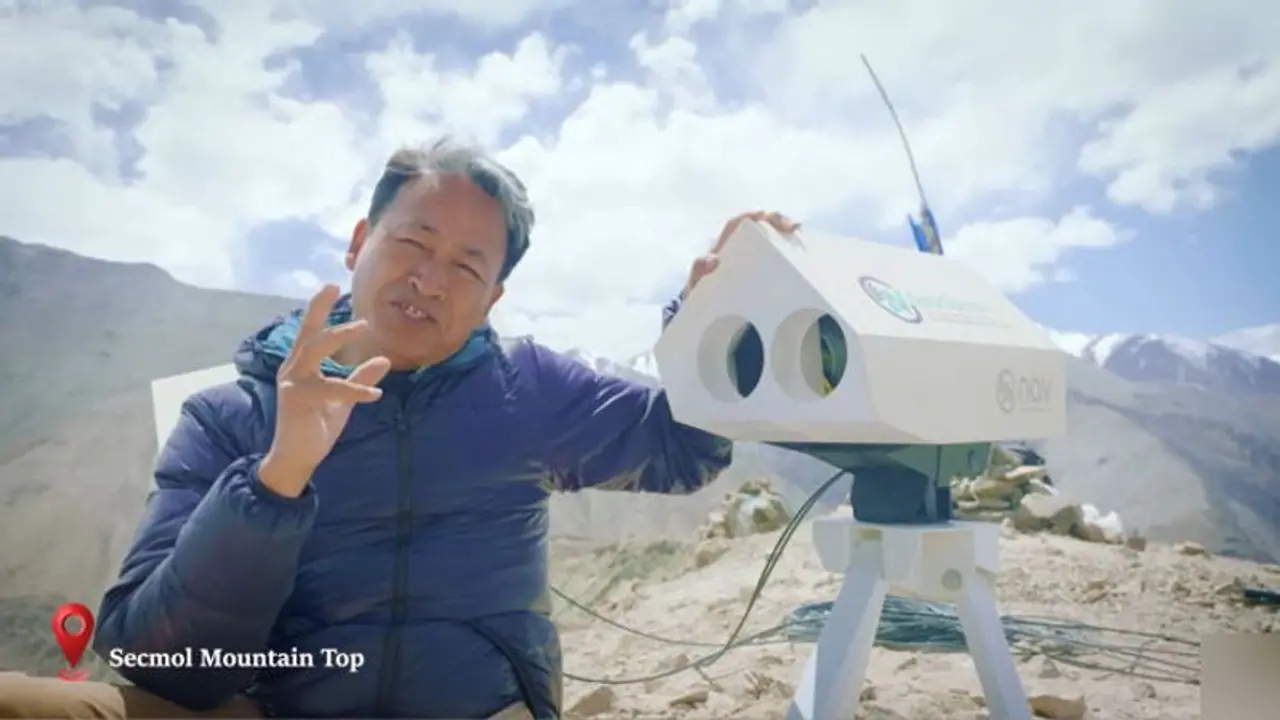World's first mountain-top Lifi laser 5G internet was recently tested in Ladakh. Girish Linganna explains how LiFi or Light Fidelity is revolutionising Internet connectivity in the mountainous region of Ladakh.
In Ladakh, the innovative mind of inventor Sonam Wangchuk has illuminated a groundbreaking solution for internet connectivity in remote and challenging terrains. LiFi, or Light Fidelity, utilises flickering lights to mimic digital signals, bringing high-speed internet to areas once thought unreachable. Let us explore this breakthrough technology and how it's revolutionising connectivity in the mountainous region of Ladakh.

Harnessing the Power of Light
LiFi technology offers a power-efficient alternative to conventional telecom towers, using mere 100s of watts to provide wireless communication. Nav Wireless Technology, an Indian brand, has pioneered this LiFi solution, reenvisioning mountains as natural phone towers rather than obstacles.
To ensure functionality in the harsh Himalayan conditions, Wangchuk devised a method for casing power banks in a system that maintains an internal temperature of around 15°C, protecting the equipment from the extreme cold.

From Lasers to Connectivity
At the heart of this innovative system is a laser transmitter perched atop a mountain, converting radio signals into flickering lasers. It receives an optical signal from a Jio tower 3.5 kilometres away, transmitting data through lasers to a receiver up to 10 kilometres away, with a bandwidth of 10 Gbps.
The receiver connects to a local telecom tower, providing seamless, urban-level connectivity to rural areas in the mountains. This LiFi solution delivers high-speed internet with stable connections of at least 400 Mbps for users, without the need for extensive digging to lay fibre connections.
Overcoming Extreme Environments
To address the challenge of maintaining and servicing this cutting-edge technology in remote areas, Wangchuk proposed training locals who are already acclimated to the extreme Ladakhi weather. This not only streamlines maintenance but also empowers the local community.
While dense fog could potentially reduce LiFi signal strength, this issue is rare in the high Himalayas, where clear and sunny conditions prevail most of the time. Wangchuk has also designed the system to withstand snowfall, with sliding snow easily removed from solar panels and optical units protected by coverings.
The Science Behind LiFi
Proposed by German scientist Harald Haas, LiFi technology transmits data using light, making it ideal for high-speed wireless communication in restricted regions. It boasts advantages over Wi-Fi such as high bandwidth, ease of use, efficiency, and safety. LiFi can be implemented in various applications, from street lights to auto-piloted cars using their headlights.
LiFi technology has the potential to revolutionise internet access, delivering faster speeds, greater security, and more efficient connectivity. As demonstrated by the success in Ladakh, it can bridge the digital divide in remote areas, opening up new possibilities for education, healthcare, and business. With continued development and wider adoption, LiFi may soon become the gold standard in wireless communication, shining a light on a connected future.
